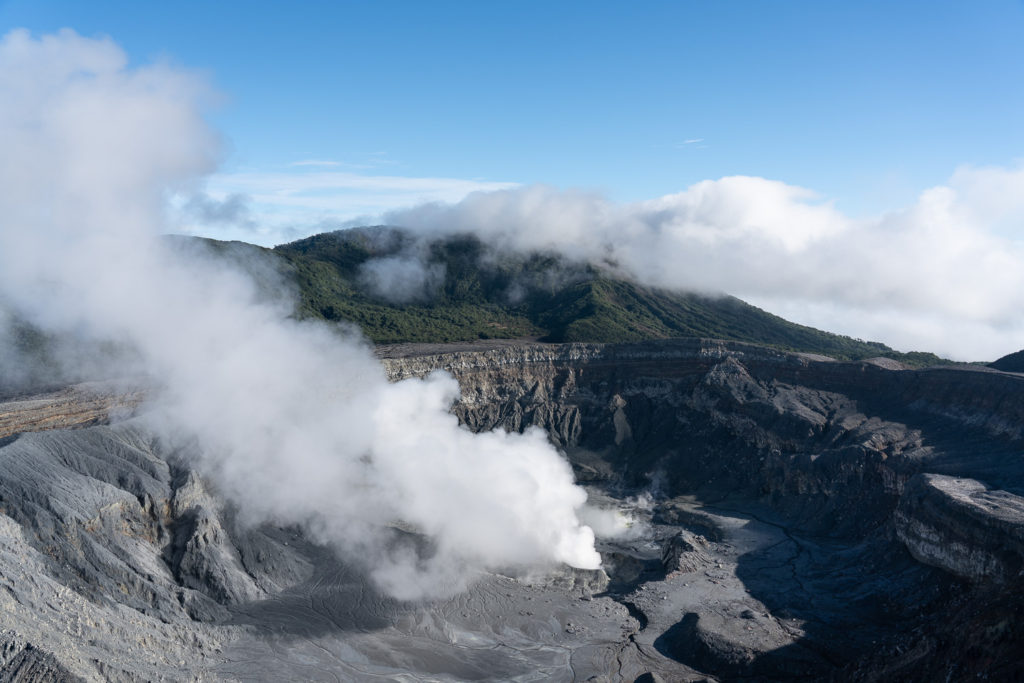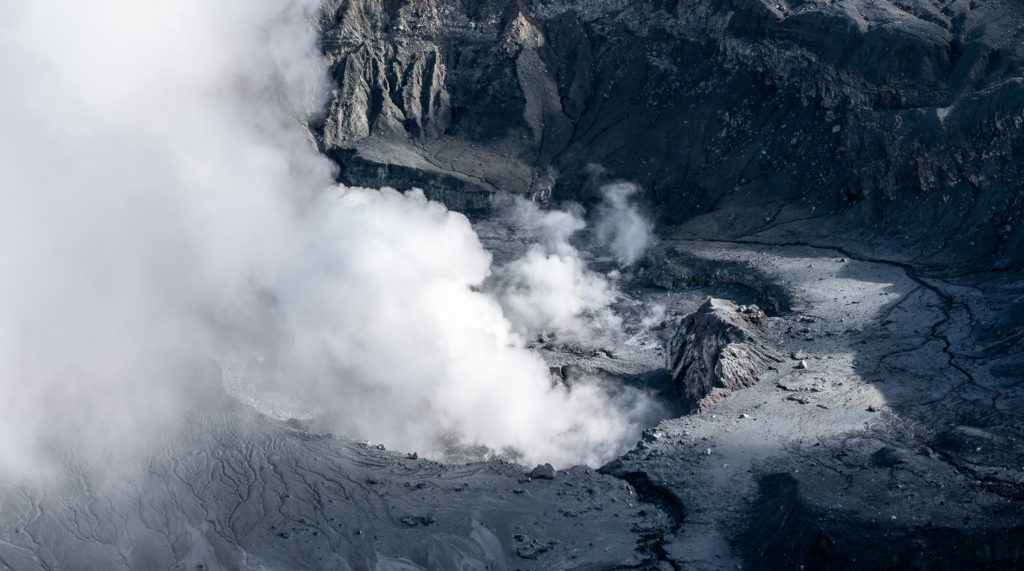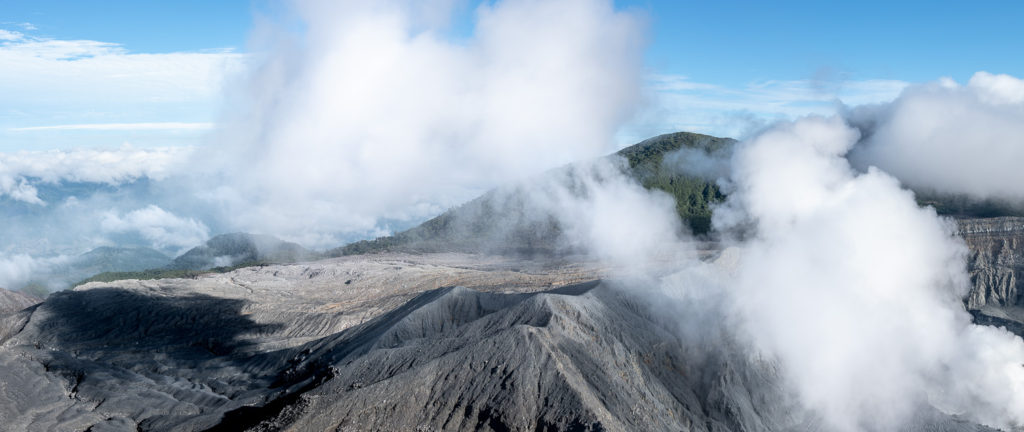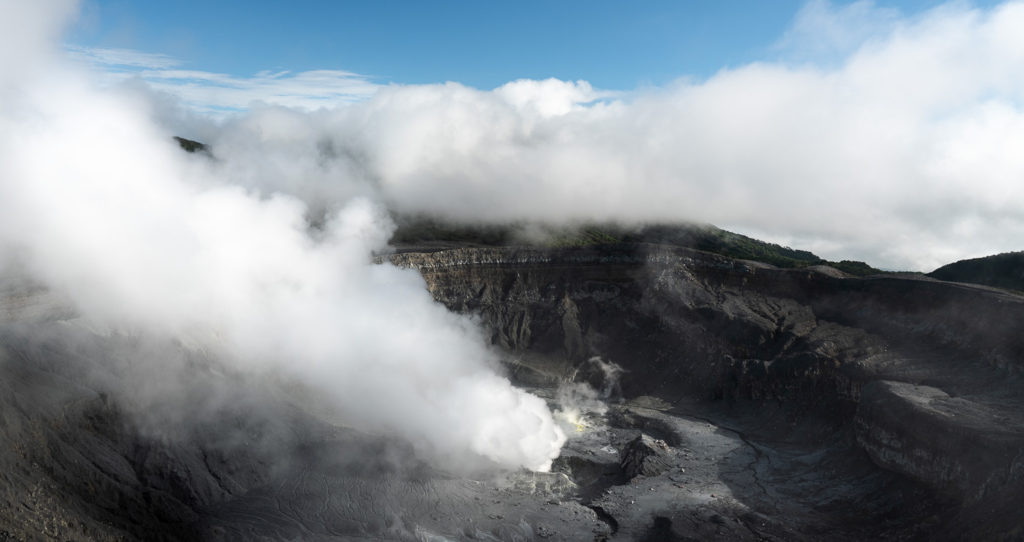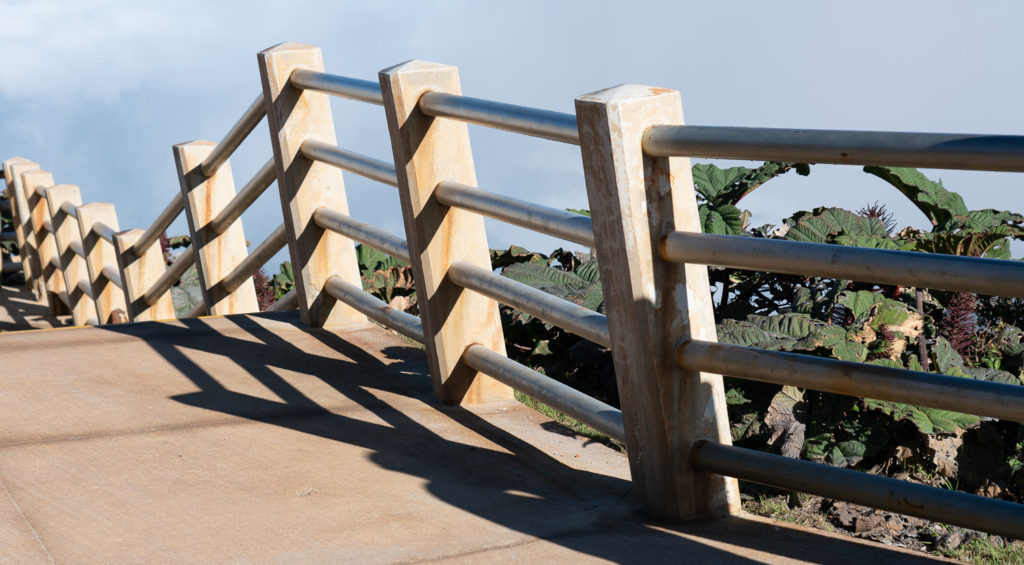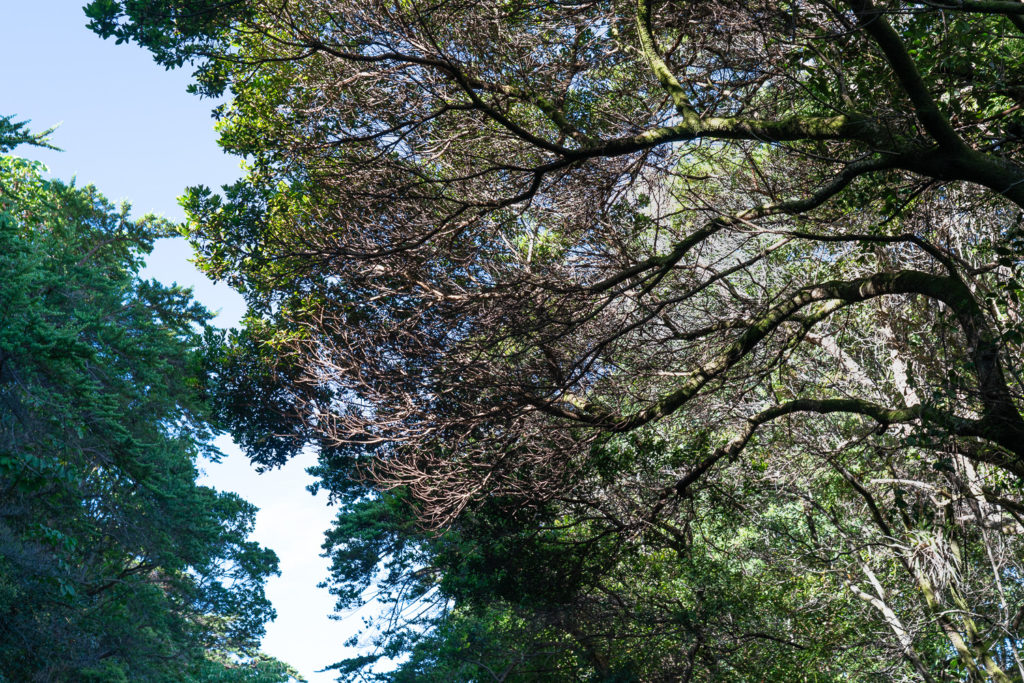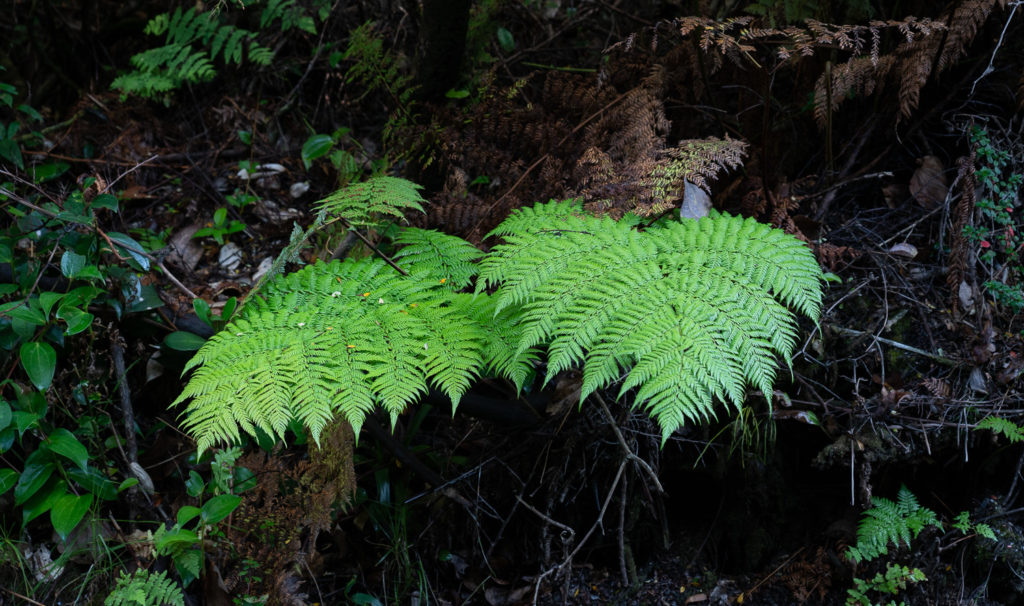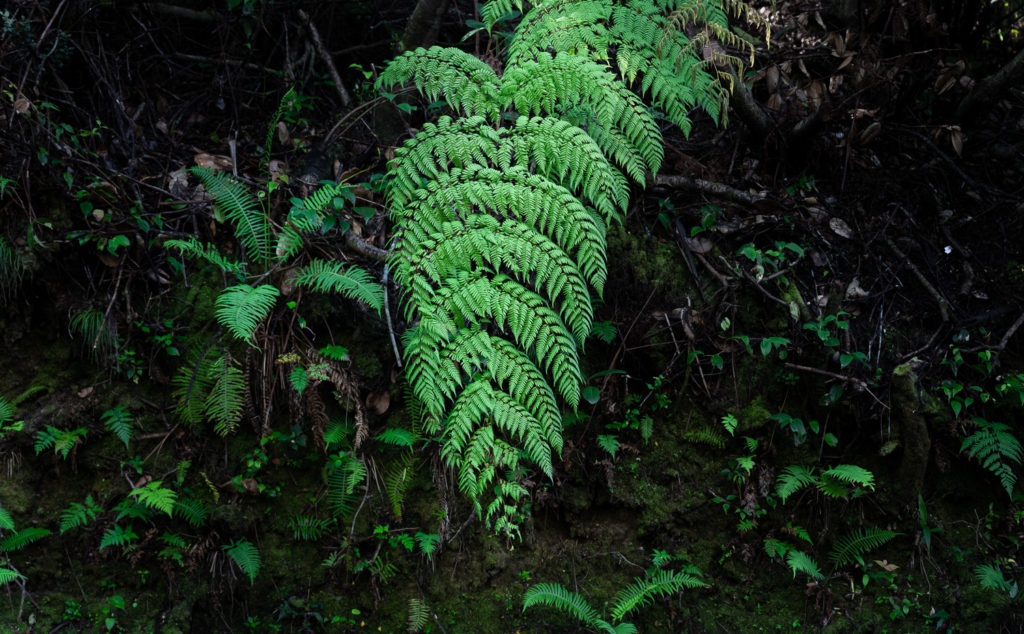Costa Rica – Volcán Poás
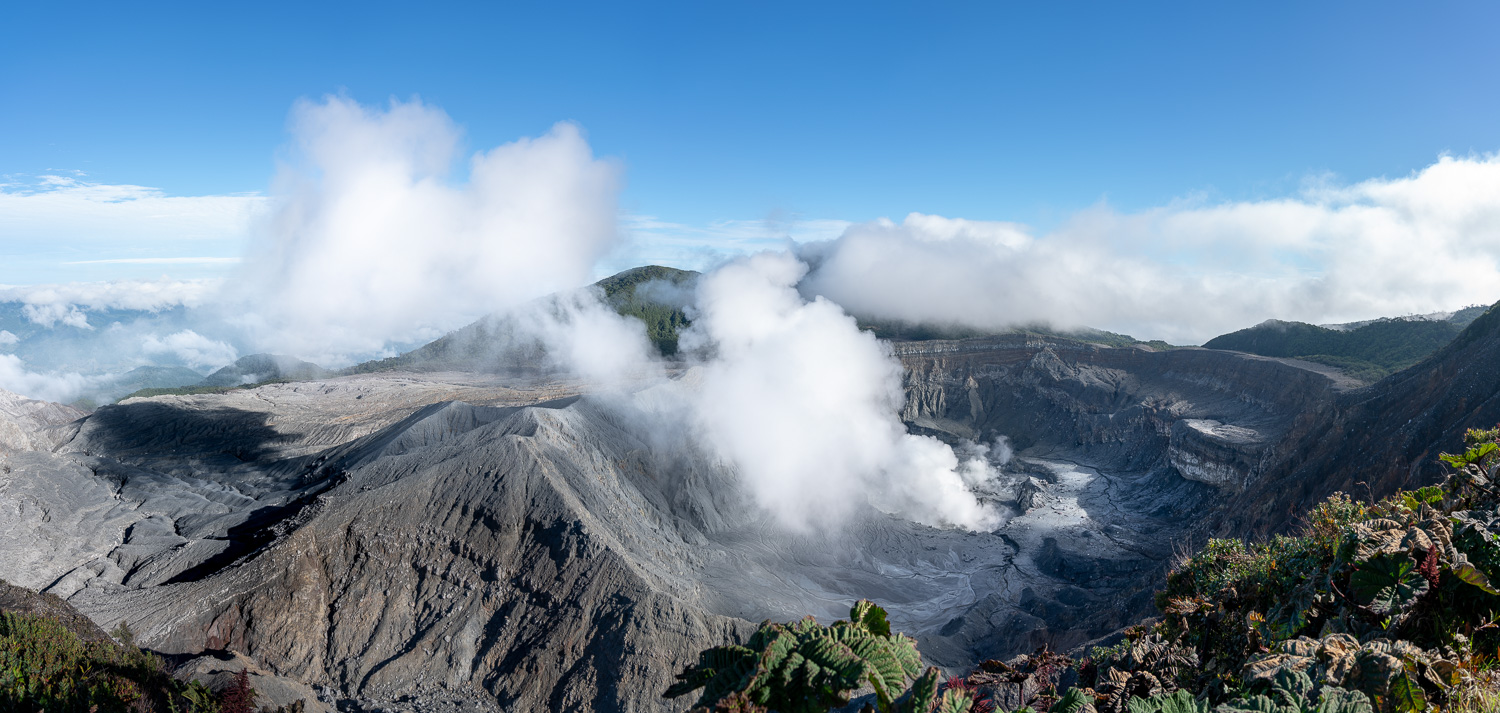
I traveled to Costa Rica for a short trip earlier this month. Early one morning at the beginning of the trip I drove to Parque Nacional Volcán Poás, in central Costa Rica – not far from where I stayed in Alajuela for a couple of nights. Poás is an active volcano, about 30 miles (50 km) north of San Jose, that is almost 9,000 feet (2,700 meters) high. It last erupted in 2017 with gas, ash, and rocks, and limited crater viewing was reopened to visitors just a few months ago. This series of photos shows various views of the crater and its gas clouds in the clear early morning light. The mood of the scene changes with the shape of the gas cloud and the shadows it casts on the crater floor and surrounding moonscape-like terrain.
The gases streaming from Poás’s fumarole, or vent, consist primarily of water vapor, along with carbon dioxide and sulfur dioxide. Poás is one of a small group of volcanoes around the world where gases are being monitored (by the Deep Earth Carbon Degassing project, or DECADE) to determine how much carbon is released from the earth’s deep core to its surface through volcanic and other natural activity.
